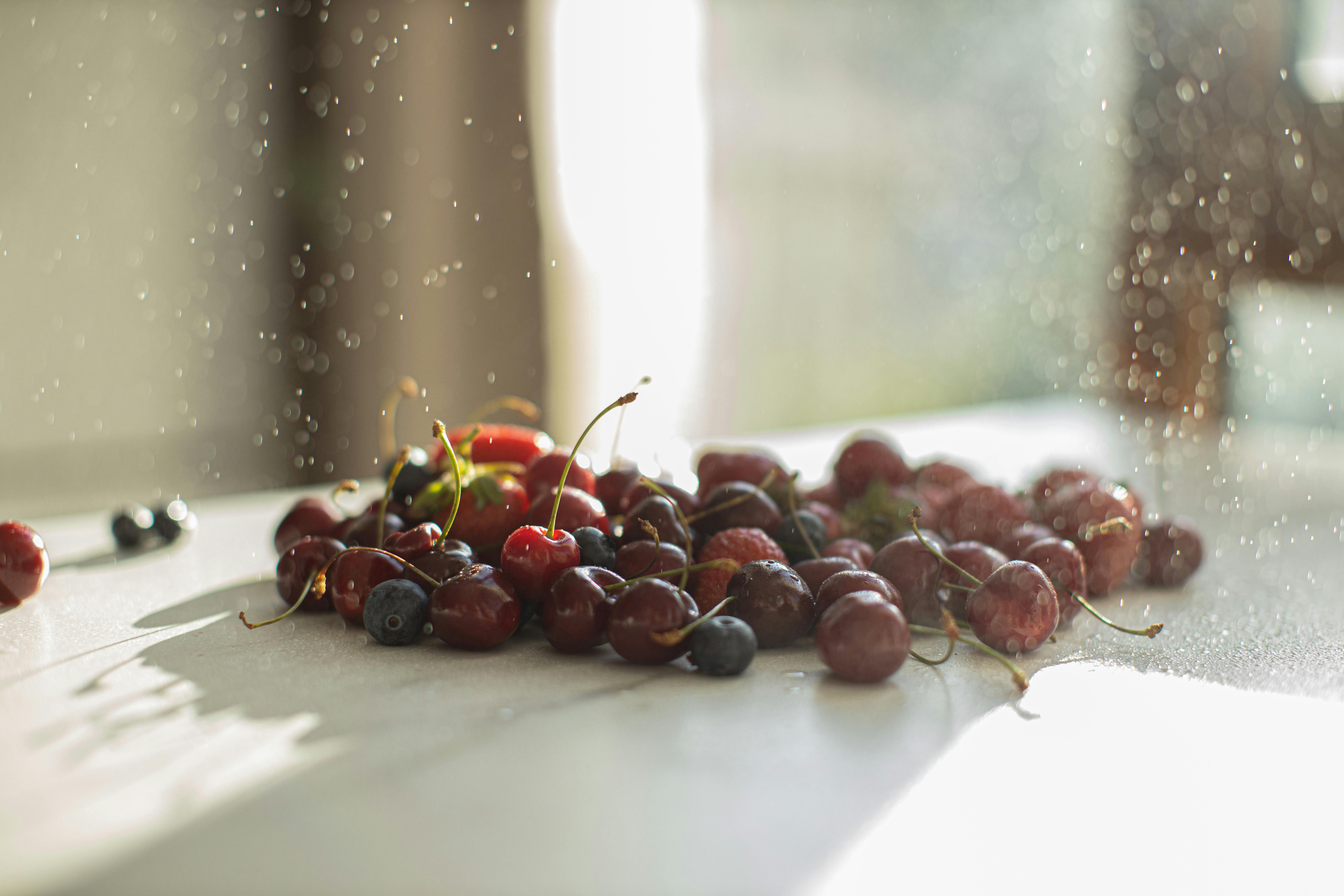Growing strawberries can be a fun and rewarding experience, but it’s important to understand how often they need to be watered. Knowing how often to water your strawberries will help ensure that they are healthy and produce plenty of delicious fruit. In this article, we’ll explore the best practices for watering your strawberry plants so you can get the most out of your garden.Strawberries should be watered every 5-7 days, or when the soil feels dry to the touch. The amount of water required will depend on the soil type and weather conditions. In hot, dry weather, strawberries may need to be watered more often.
Benefits of Watering Strawberries
Watering strawberries is essential for keeping them healthy and productive. Without adequate water, strawberry plants become stressed and are unable to produce good-tasting, juicy fruits. Proper watering also helps protect strawberry plants from pests and diseases. Here are some of the benefits of watering strawberries:
1. Improved Growth – Watering helps strawberry plants grow faster and bigger, resulting in a larger harvest. The extra water also helps create bigger fruits with a sweeter flavor.
2. Enhanced Nutrition – Strawberries need plenty of nutrients to reach their full potential. Regular watering helps ensure these nutrients are delivered to the plant, resulting in healthier fruits with higher levels of vitamins and minerals.
3. Reduction of Pests & Diseases – Watering reduces the risk of pests and diseases attacking your strawberry plants by providing an environment that is inhospitable to these invaders. Additionally, proper watering helps ensure that the leaves stay dry which prevents disease-causing fungi from growing on the foliage.
4. Improved Soil Structure – Regular watering can help improve soil structure and reduce compaction which makes it easier for roots to penetrate the soil and absorb nutrients more effectively.
Watering is an important part of successful strawberry production, so be sure to give your plants plenty of water during dry periods or when fruit is forming on the plants for best results!
Amount Of Water Needed For Strawberries
Strawberries are a delicious and nutritious fruit to enjoy. In order to grow and maintain healthy, delicious strawberries, adequate water is essential for their growth. Strawberries require a specific amount of water in order to thrive and produce the best tasting fruits.
The amount of water needed for strawberries will depend on the climate in which they are grown, as well as the type of soil in which they are planted. Generally, strawberries require 1 inch of water per week during the growing season. This amount should be increased if there is a period of drought or extreme heat. It is important to keep the soil consistently moist but not overly saturated with water.
When watering strawberries, it is best to do so early in the day so that the foliage has time to dry out before nightfall. This helps reduce the risk of disease and pest infestation, which can be a problem for wet plants. Additionally, make sure not to get any water on the flowers or fruit as this can cause them to rot.
It is important not to over-water strawberries either, as this can lead to root rot and other issues with plant health. If you are unsure how much water your strawberry plants need, monitor them closely and adjust your watering accordingly based on their needs. Regularly check your strawberry plants by feeling around their base and checking for moisture in the soil before deciding whether or not they need more water.
Overall, proper watering is essential for growing healthy strawberry plants that will yield sweet and delicious fruit. Make sure you provide enough water while still avoiding overwatering or allowing your soil to become overly saturated with moisture. With proper care and attention, you can ensure that your strawberry plants will thrive and produce luscious fruits every season!
Frequency Of Watering Strawberries
Watering strawberries is an essential part of strawberry cultivation. The frequency of watering strawberries depends on many factors such as the type of soil, climate, temperature, and humidity. In general, it is recommended to water the plants at least twice a week. If the climate is dry or hot, then you should water more often.
If you are growing your strawberries in a container or raised bed garden, then it is important to keep the soil moist but not soggy. You can check the soil moisture by inserting your finger into the soil and seeing if it feels damp. If not, then it’s time to water your plants again.
It is also important to provide adequate drainage for your strawberry plants so that excess water can escape and prevent root rot or other fungal diseases. You can add some organic matter such as compost or aged manure to the soil before planting to help with drainage and improve the overall health of your plants.
In addition to regular watering, you should also fertilize your strawberry plants regularly with a balanced fertilizer such as 10-10-10 in order to provide them with all necessary nutrients for healthy growth and fruit production. You can fertilize once every month during the spring and summer months when they are actively growing and producing fruit.
Finally, mulching around your strawberry plants can help conserve moisture in the soil and reduce weeds that may compete for resources with your strawberry plants. Organic mulches like straw or wood chips are good choices for this purpose.
Overall, proper watering and fertilizing practices are essential for healthy and successful strawberry cultivation. With regular care and maintenance, you should be able to enjoy a plentiful harvest of delicious strawberries in no time!
Signs of Overwatering in Strawberries
One of the most common problems encountered by strawberry growers is overwatering. If you are growing strawberries, it is important to be aware of the signs of overwatering so that you can take corrective action quickly. Some of the most common signs of overwatering in strawberries include yellowing leaves, wilting foliage, stunted growth, and a decrease in fruit production.
Yellowing leaves can be an early sign of overwatering in strawberries. As excess water accumulates in the soil around the plant’s roots, it deprives them of oxygen and other essential nutrients they need to remain healthy. This causes the leaves to turn yellow and eventually die off if not addressed quickly.
Wilting foliage is another sign that your plants are getting too much water. Wilting leaves indicate that the roots are not able to take up enough water from the soil because it is already saturated with water. In order to correct this problem, you will need to reduce your watering schedule or use a drainage system to help remove excess moisture from the soil.
Stunted growth is a third indication that your strawberry plants are being overwatered. The roots will be unable to absorb enough nutrients from the soil if it is too wet and this will result in slow or stunted growth. You should also check for root rot which can also cause stunted growth and should be treated as soon as possible if found.
Finally, a decrease in fruit production can also be a sign that your plants are being overwatered. Too much water can cause stress on the plant which could result in fewer flowers and fruits being produced. If this happens, you should adjust your watering schedule or add additional drainage systems so that your plants have access to adequate amounts of moisture without being over-saturated.
Overall, it is important to pay attention to these signs of overwatering so that you can take corrective action quickly and prevent further damage to your strawberry plants. By understanding how much water your plants need and making sure they get just enough without drowning them, you will be able to keep them healthy and productive for many years to come!

Signs of Underwatering in Strawberries
Strawberries are one of the most popular fruits, but they do require proper irrigation for optimal growth and production. Unfortunately, underwatering can cause a variety of problems and can even lead to plant death if left unchecked. To ensure your strawberry plants are receiving enough water, it is important to be aware of the signs of underwatering. These include wilting leaves, dried out soil, yellowing foliage, stunted growth, and poor fruit production.
Wilting leaves is one of the first signs that your strawberry plants are not receiving adequate water. The leaves will begin to droop and curl downward as they become dehydrated. The soil surrounding the plants should also have a dry and crumbly appearance when there is too little water present. In addition to wilting foliage, yellowing leaves can also indicate a lack of water in the soil.
Stunted growth is another common sign that your strawberries are not getting enough water. When the plants lack adequate hydration, their growth will be hindered and they may appear significantly smaller than other healthy plants in the area. Poor fruit production may also occur if the plants are deprived of enough moisture. In this case, you may notice fewer flowers or fewer berries on each plant compared to those with sufficient irrigation.
Overall, it is important to keep an eye out for these signs when caring for your strawberry plants as they can point to a potential issue with underwatering or other environmental stressors. By providing proper irrigation and monitoring for any changes in condition, you can ensure that your strawberry plants remain healthy throughout their growing season.
Best Time to Water Strawberries
Watering strawberries is an important part of keeping them healthy and producing lots of delicious fruit. It’s important to know when is the best time to water strawberries to ensure they get the right amount of hydration and nutrients. The best time to water strawberries is in the early morning or late evening. This helps prevent evaporation and keeps the roots cool during the hottest part of the day.
When watering strawberries, make sure you use a slow trickle that reaches 6-8 inches below the surface. This will help keep the roots cool and moist without overwatering. If you have mulch or straw around your strawberry plants, be sure to water underneath it as well so that all parts of the plant are getting enough moisture.
It’s also important to water evenly throughout your strawberry bed so that all plants are getting an even amount of moisture. If some areas are getting more or less water than others, this can lead to uneven growth or even disease in your strawberry plants.
Finally, make sure not to over-water your strawberries as this can cause root rot and other problems with your plants. Overwatering can also leach nutrients from the soil which can lead to nutrient deficiencies in your strawberry plants. The best way to tell if you need to water your strawberries is by checking the soil around them for moisture – if it feels dry then it’s time for a drink!
Tools & Supplies Needed for Watering Strawberries
Watering strawberries is an important part of strawberry care and maintenance. To ensure healthy, productive plants, it is essential to provide sufficient water to the plants. To do this, a few tools and supplies are necessary.
One of the most important tools for watering strawberries is a hose or watering can. A hose will allow the grower to easily reach all parts of the strawberry bed, while a watering can can be used to water specific areas or individual plants without getting too close. Both tools should be made from durable materials that won’t corrode when exposed to water.
In addition to a hose or watering can, strawberry growers should also have some kind of irrigation system in place. This could include an in-ground irrigation system with drip lines or automated sprinklers, or an above-ground system such as soaker hoses or rain barrels that slowly release water over time. Irrigation systems help conserve water by ensuring an even distribution of water throughout the strawberry bed.
Finally, strawberry growers should also have some kind of soil moisture meter on hand. This tool helps monitor the amount of moisture in the soil so that you know when it’s time to water again. It also helps prevent overwatering which can cause root rot and other problems in strawberries.
Watering strawberries requires having the right tools and supplies on hand. A hose or watering can, an irrigation system, and a soil moisture meter are all essential for providing adequate moisture to strawberry plants and ensuring healthy, productive plants throughout the growing season.

Conclusion
Watering strawberries is an important part of the maintenance of the plant. There is no one-size-fits-all answer when it comes to how often to water a strawberry plant; the frequency should depend on factors such as the type of soil, the weather, and how much heat and sunlight the plant receives. In general, strawberry plants need about 1 inch of water per week in dry periods. In wetter climates, you may need to water less frequently, while in hot regions with little rainfall, you may need to water more often.
Nevertheless, it’s important not to overwater strawberries too much; too much moisture can cause root rot or other diseases. You should also be sure that your strawberry plants are receiving enough nutrients from fertilizers and soil amendments in order to thrive.
By taking into account all these factors, you can ensure that your strawberry plants are getting just the right amount of water they need for healthy growth and production of sweet and delicious fruit!



